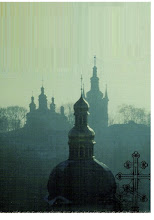.
 Joshua Knelman’s 'Hot Art: Chasing Thieves and Detectives Through the Secret World of Stolen Art', looks at the shadowy side of art fairs, galleries, museums, auction houses, private and public collections. In the United States alone, the business of fine art is worth billions of dollars annually, but that the value of the amount of stolen art annually is not clear. But it is clearly a lot. The book brings the message that "in the 1980s, stolen art grew to an estimated $4-billion to $6-billion". These estimates vary of course, and depend on what we consider to be "stolen art", the definition is somewhat ambiguous. In any case it still seems worth stressing that whatever the precise figures are, this still makes the trade in stolen art: "the fourth-largest black market in the world after drugs, money laundering and weapons, according to Interpol and UNESCO". While I generally do not think it is useful to treat dugup antiquities as "ancient art", this passage from a review of the book struck a chord:
Joshua Knelman’s 'Hot Art: Chasing Thieves and Detectives Through the Secret World of Stolen Art', looks at the shadowy side of art fairs, galleries, museums, auction houses, private and public collections. In the United States alone, the business of fine art is worth billions of dollars annually, but that the value of the amount of stolen art annually is not clear. But it is clearly a lot. The book brings the message that "in the 1980s, stolen art grew to an estimated $4-billion to $6-billion". These estimates vary of course, and depend on what we consider to be "stolen art", the definition is somewhat ambiguous. In any case it still seems worth stressing that whatever the precise figures are, this still makes the trade in stolen art: "the fourth-largest black market in the world after drugs, money laundering and weapons, according to Interpol and UNESCO". While I generally do not think it is useful to treat dugup antiquities as "ancient art", this passage from a review of the book struck a chord: The main story is told from the perspective of a handful of crusaders who battle not only the increasing sophistication and determination of art thieves but the indifference of their police colleagues and even the hostility of gallery owners who don’t want to change their ways. “The business of art is one of the most corrupt, dirtiest industries on the planet,” maintains one such crusader, a Toronto lawyer specializing in cultural property law named Bonnie Czegledi. “There are no regulations and theft is rampant.” Proper documentation of sales is often missing, and gallery owners often feel it is rude to inquire closely about the provenance of a work of art offered to them. “Nobody in the art world asks questions,” Paul [the author's main informant from the criminal world] informs Knelman.Nowell is a little more critical of the book's style and coverage, but in her review gives a piece of information about the Art Loss Register which has often been misused by antiquity dealers to show their items are 'clean' that seems worth drawing attention to:
The Art Loss Register, founded in London in the 1990s, lists more than 100,000 works of stolen art. Only 2 per cent have been recovered. In 2001, the register listed as missing or stolen 659 Picassos, 397 Miros, 347 Chagalls, 313 Salvador Dalis, 216 Warhols and 199 Rembrandts. The U.S. Federal Bureau of Investigation’s National Stolen Art File is small by comparison, with only 6,500 listings.I wonder where the designer of the book's cover has been since 1963. Still this seems like a new book worth considering adding to our libraries.
Philip Marchand, 'Open Book: Hot Art, by Joshua Knelman', National Post, Sep 30, 2011,
Iris Nowell, 'Catalogued, admired and stolen', Globe and Mail, Sep. 30, 2011









No comments:
Post a Comment